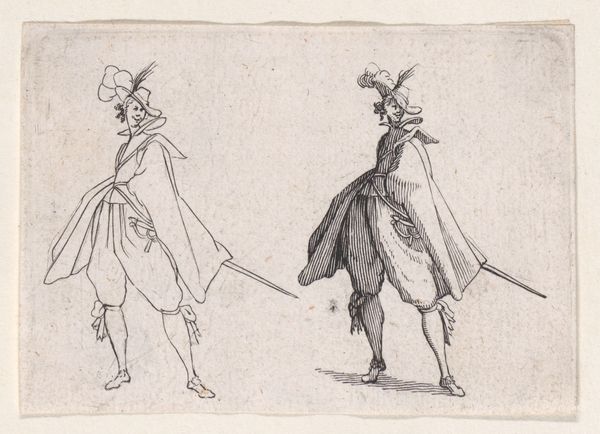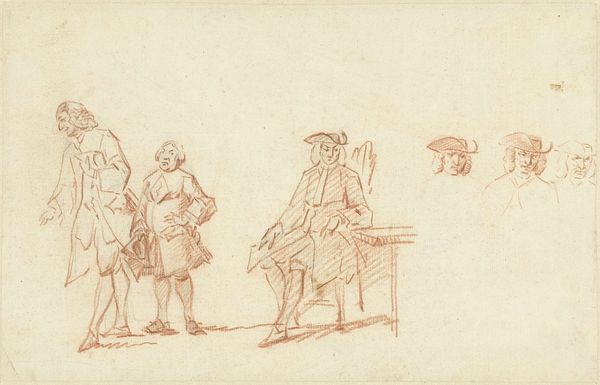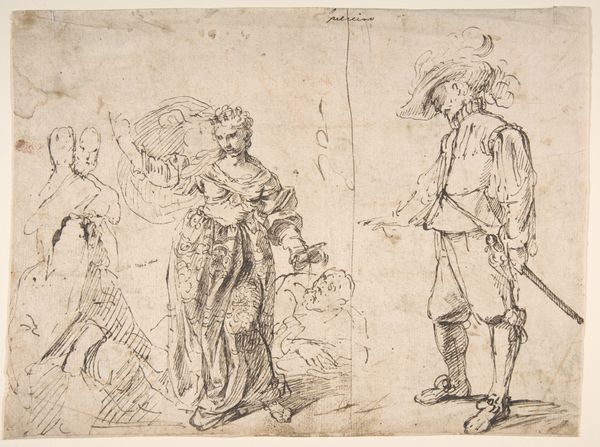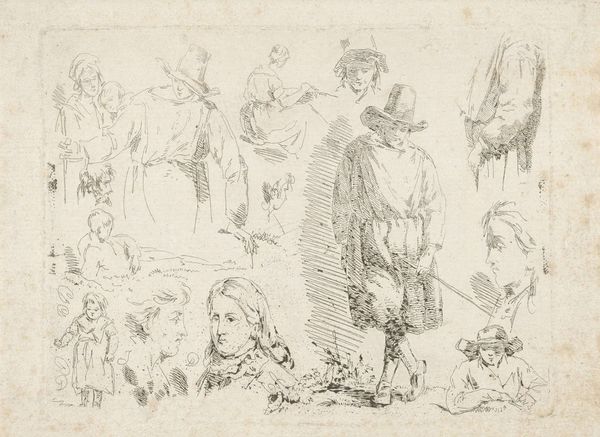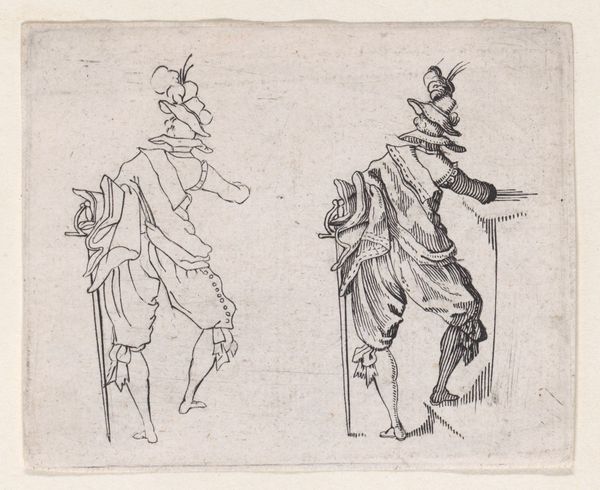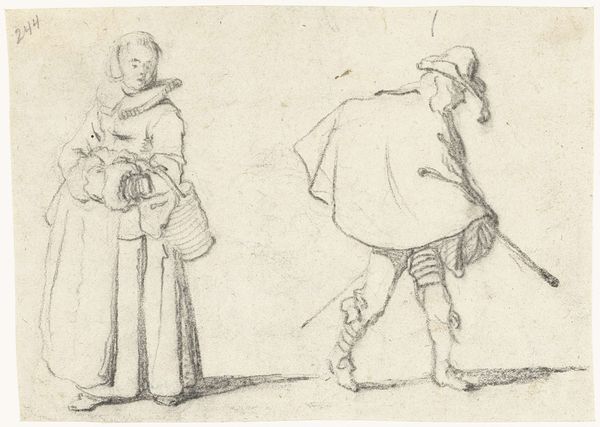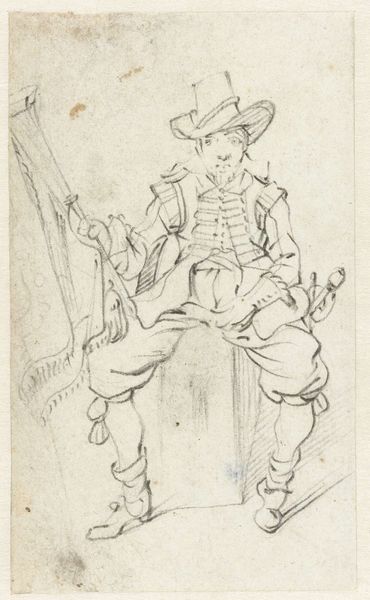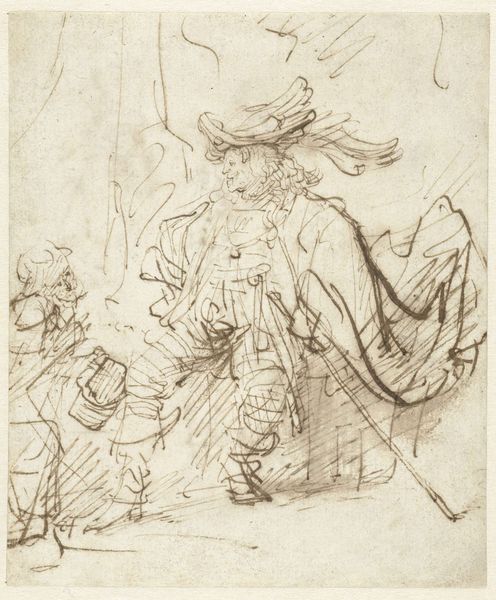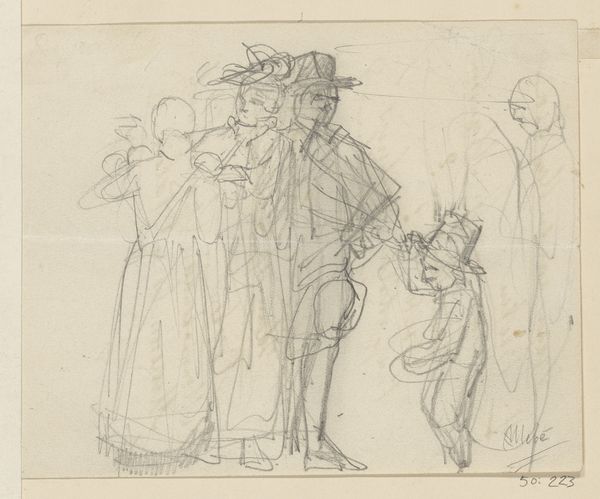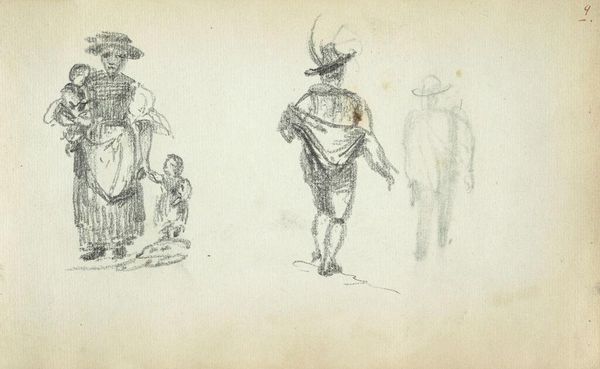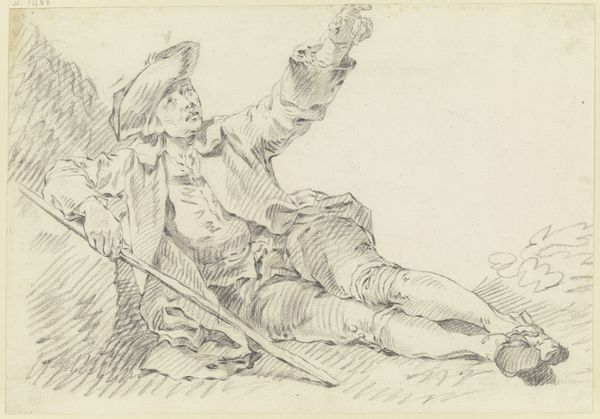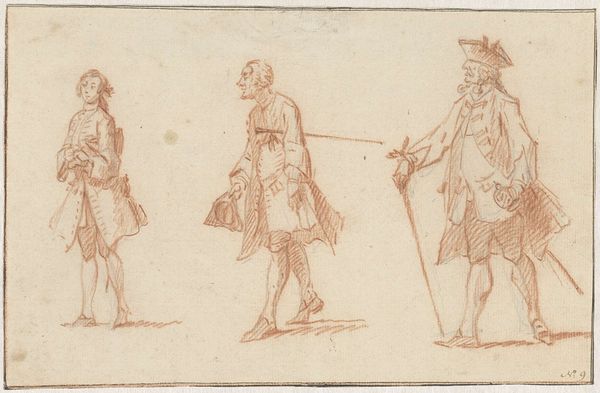
drawing, paper, ink, pen
#
portrait
#
drawing
#
imaginative character sketch
#
quirky sketch
#
baroque
#
figuration
#
paper
#
personal sketchbook
#
ink
#
sketchwork
#
ink drawing experimentation
#
pen-ink sketch
#
line
#
sketchbook drawing
#
pen
#
genre-painting
#
storyboard and sketchbook work
#
sketchbook art
#
fantasy sketch
Dimensions: height 161 mm, width 235 mm
Copyright: Rijks Museum: Open Domain
Curator: Before us is "Three Studies of a Seated Trumpeter" by Jan Martszen de Jonge, created between 1620 and 1623. It resides here at the Rijksmuseum. Editor: My initial reaction is one of spontaneity, as though stumbling upon a page from the artist's personal sketchbook. The clustered figures invite immediate visual interpretation. Curator: Indeed. The artist employs ink on paper to explore figuration within a genre scene. Notice the baroque influences—particularly evident in the dynamic lines. Editor: Let's consider the materials themselves. Pen and ink, readily accessible tools for any artist, signify the immediacy and economy of production. The drawings likely chronicle real-world figures encountered in De Jonge's milieu. Curator: Observe the formal relationships within the composition. The rhythmic repetition of the figure, each slightly varied, produces a subtle but effective study in variation. The use of line, particularly, contributes to the distinct form. Editor: Furthermore, consider the production of trumpet instruments during that period. The significance of brass instruments would imply the sitter had a valued trade and, thus, some status, perhaps working with military. The paper stock, too, gives clues about that which was considered worthy enough to capture. Curator: Semiotically, the trumpeter signifies heraldry and perhaps, military prowess. Each detail of dress is meticulously recorded, contributing to an understanding of Baroque sartorial codes. It projects wealth, which becomes its signifier. Editor: And what of the implied consumption in one figure raising his glass? Alcohol production and trade played a role. The sword also communicates an age in conflict and raises broader questions of labor and access at the time of the sitter and of the artist too. Curator: De Jonge offers a complex and considered series of formal poses to decode. Editor: By paying attention to his medium, its origin, how these portraits come to exist, we find greater context to this Dutch age. Thank you for looking into "Three Studies of a Seated Trumpeter" with us.
Comments
No comments
Be the first to comment and join the conversation on the ultimate creative platform.
